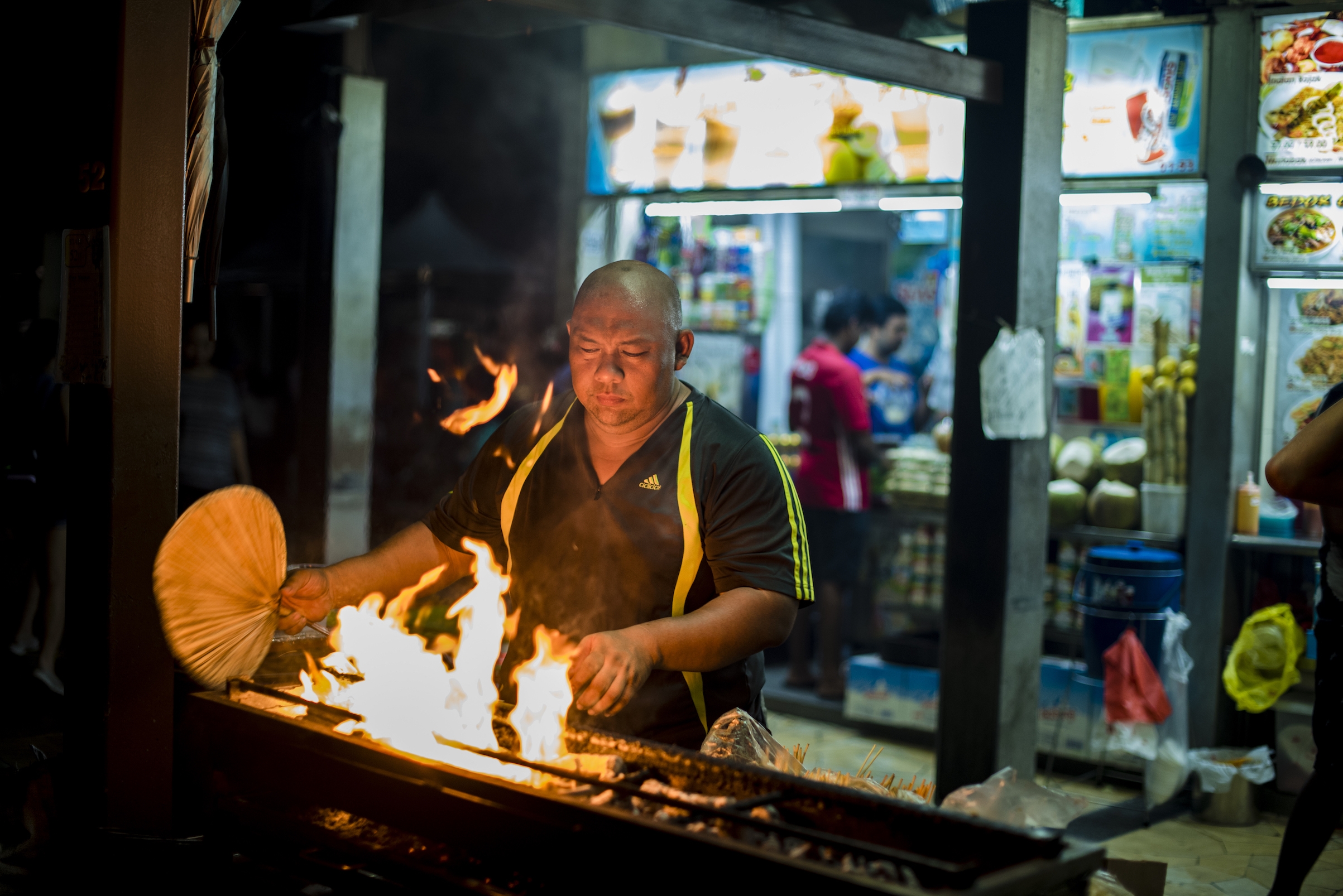
For a city so scorched by the sun, Singapore can feel cold, a crisp urban maze of pristine and ordered streets, soaring and faceless concrete and glass, and hyper-air conditioned subterranean malls that hide its humanity.
But pockmarking this sterile city-state—squeezed between skyscrapers or wedged into strip mall-like facades—are crowded hives where throngs buzz and jostle for sizzling meats and heaped noodles amid a riot of aromas, clouds of fry oil and clangs of woks.
They are the hawker centers—clusters of sometimes a dozen, sometimes a hundred tiny open-air food stalls dressed in gaudy colors and loud menus—and they are where the people and pulse of Singapore are most vibrant.
There are over 100 of them across Singapore, each with its own vibe, some catering to urban hipsters, others a working-class lunch crowd. At all, the offerings are on repeat: oyster omelets; brothy soups with cockles and shrimp; poached chicken, boned, sauced and piled over rice; and the inexplicably named “carrot cake,” a hearty egg foo yong-like dish of radish and rice flour.
And then there is the food I’d come for—satay, a skewered, grilled meat that by comparison makes American kebabs seem like unwieldy boulders. Sold in batches of 10 for pennies apiece, these bite-size strips are a story of contrast. Crispy, charred edges and tender, juicy centers, the flavor a tug between sweet, savory and salty. Most stalls sell three varieties—pork, chicken and lamb. All of them are served with Malaysian-style peanut dipping sauce: chunky, thin, acidic and entirely unlike the thick Thai peanut sauces we know.
At the East Coast Lagoon Food Village—a hawker center perched on the banks of the Singapore Strait, where hundreds of tanker ships await their turn to offload goods at port—the air burns deliciously with meat, salt and lemon grass.

Of the 30 or so stalls, at least half serve satay from long, narrow grills of burning red coals. Most hawker centers are DIY; order your food, find a melamine picnic table, eat, clean up after yourself. Here, brassy ladies run the show, directing you to a table under pitched roofs. “One beer? Two? How many?”
Each stall has a pusher, men calling out, “Satay? Satay? Satay, man!” Muslims, Hindus, Chinese, Malaysians all gather and dine together, their children running amok and nobody caring. Here, satay is the happy chaos of a Sunday church picnic.
Speed is essential to satay. The cooks flip the skewers over the heat once, twice, three times a minute, sometimes more. It’s the key to keeping Booth 52, also known as Ali Satay. Waving a large bamboo fan, he stokes the flames beneath some 40 or 50 skewers he has in near-constant motion. And when he’s not flipping them, he’s basting them with a brush that’s clasped to a stalk of lemon grass, dripping a syrupy marinade.
His recipe is simple. Chicken thighs—and always thighs, for their rich flavor and tender texture—are marinated for at least two hours in a slurry of oil, turmeric, ginger, onion powder, cumin, garlic, salt and sugar. Always sugar. Singaporean food is almost always sweetened. “If there’s no sugar, you spoil it,” Aziz says, pointing to the charred bits at the edges of his satay skewers. “You see the black part? That’s from the sugar.”
I order 10 each of chicken and pork. They are undeniably delicious, rich with turmeric, ginger, cumin and sugar. No heat and not overwhelmingly peanuty, but with a wonderful char and sweetness. The meat is so tender it practically falls off the sticky wooden skewers. And the peanut sauce—made by Aziz’s mother—offers the perfect savory-tangy balance.
Since troughs of blazing coals and bamboo fans aren’t standard for American backyards, we knew we’d need to adapt. Using slightly thicker cuts of chicken gave us a bit more leeway during cooking, sparing us the repeated flipping that kept Aziz in constant motion. We stayed true to his marinade formula, and our strips of thighs needed just a few hours to develop plenty of flavor.
We created the recipe to work both on the grill and under a broiler. The high heat of both allowed the chicken to cook quickly and still develop the charred edges that define satay. Under the broiler, setting a sheet pan spread with kosher salt under the skewers contained drips and prevented smoking.
But our chicken still lacked the depth of flavor I’d loved in Singapore. Adding ingredients—including lemon grass and peanuts—only muddied the clean, bright flavors we were after. That's when we realized we’d skipped an important step I’d seen back in Singapore’s hawker markets—the basting.
We’d already made a simple and light dipping sauce to mirror the marinade by thinning a small amount of creamy peanut butter with soy sauce, rice vinegar, peanut oil and chili-garlic sauce seasoned with sugar, ginger and turmeric. But instead of offering it only on the side, we followed Aziz’s lead and also used it to baste our skewers during cooking. It was an easy way to up the flavor without weighing down the meat.




